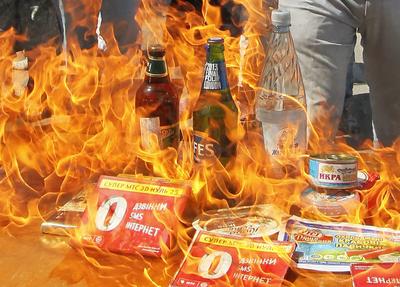There may be various reasons for this change of direction, including a lack of interest among Russian businesses, persistent inertia of trade officials and, of course, the feeble economy of the Pacific part of Russia, the Far East. But one crucial underlying fact is that Russia tends to identify itself as a Eurasian rather than Asia Pacific or European economy. Russia is therefore attempting to create an enlarged economic community in the Commonwealth of Independent States (CIS) region: the nucleus for a future ‘common economic space from Lisbon to Vladivostok’.
The Customs Union of Belarus, Kazakhstan and Russia originated in the mid-1990s as the Eurasian Economic Community, and was one in a series of attempts to re-connect formerly borderless Soviet economic areas. Eventually expanding to include the Kyrgyz Republic and Tajikistan, it remained a nominal arrangement until 2010 when the trilateral Customs Union came into being and effectively delayed Russia’s WTO membership by approximately two years. The Customs Union is expected to evolve into the Single Economic Space — a common market of goods, services, labour and capital — by 2015 and into a Eurasian Economic Union afterwards. References to an EU model and Russia’s overt dominance are features of this ongoing economic integration.
Policymakers in Moscow realise that for this arrangement to acquire critical mass, it is essential to include Ukraine, the second-largest economy in the region. Ukraine, however, has been reluctant to engage in deeper integration with Russia. Instead, Kiev opted to accede to the WTO earlier in 2008, and to negotiate high-standard FTAs to promote its trade policy objectives by signing with the European Free Trade Association and negotiating with Singapore, Canada, the EU and Turkey. Ukraine has also an old-style FTA with Russia effective since 1994. In 2011, most CIS members signed a new plurilateral FTA that replaced an out-dated regional agreement of 1994. However, this old-style FTA did not prevent trade wars between the two countries.
In late 2011, Ukraine and the EU concluded the talks for an Association Agreement of which a deep and comprehensive FTA was the core component. A Trade Sustainability Impact Assessment commissioned by the EU predicted that the Agreement would result in additional economic growth for Ukraine, equivalent to a year’s normal economic growth (5.3 per cent) under a deep FTA scenario. In contrast, a similar study in 2012 funded by the Eurasian Development Bank, and backed by Russia, predicted a 6 per cent of GDP gain for Ukraine if it joined the Belarus–Kazakhstan–Russia Customs Union as opposed to a loss of 1.5 per cent of GDP if Ukraine signed an FTA with the EU.
On 15 May 2013, the EU Commission announced that the EU–Ukraine Association Agreement might be signed at the Eastern Partnership Summit in Vilnius in November 2013. Moscow retaliated later in May by introducing a memorandum and a joint statement between the Eurasian Economic Commission and Ukraine on the latter’s involvement in the Eurasian integration as a potential observer. On 12 August 2013, the Cabinet of Ministers of Ukraine posted the draft Agreement on the government portal. The next few days saw a peak in trade frictions at the Russia–Ukraine border when Russian customs exposed all Ukrainian exports to a meticulous inspection that had an almost prohibitive effect.
The accompanying message from Russian officials was straightforward. Sergey Glaziev, former Chairman of the Customs Union Commission and now Putin’s advisor on Eurasian economic integration, explained that the Russian Federal Customs Service launched a one-off preventive exercise as a response to Ukraine’s intention to sign the Association Agreement with the EU, which he labelled as a ‘suicidal’ step. Putin confirmed, though in less rigid terms, that Russia and its Customs Union partners would consider ‘protective measures’ if Ukraine pursued trade liberalisation with the EU.
Those warnings are unlikely to help Russia win the battle over Ukraine, and the conclusion of the Association Agreement is still well on track. Eurasian integration has been dealt a further blow as Armenia and Moldova have their respective FTAs with the EU ready for signing. Therefore, the most likely, and probably the only, candidates for the Customs Union are the Kyrgyz Republic and Tajikistan. Even this regional configuration faces uncertain prospects, as Russia’s partners may be unhappy with its governing style, while the rising sentiment in Russia against immigrant workers, predominantly the free flow of labour from CIS neighbours, is a growing issue.
Russia’s Eurasian choice has significant implications for its trade policy towards the Asia Pacific. Having prioritised its own economic bloc within former Soviet borders, Russia drew a dividing line between itself and the emerging Pacific mega-regionals or even individual state members. As a non-player in Asia Pacific economic integration, Russia will have fewer options with which to pursue its economic objectives in the region. The recent developments around Ukraine and the controversial use of stringent trade policy measures as foreign policy tools are also sending adverse signals to Russia’s trading partners in the Asia Pacific.
Kirill Muradov is Head of International Research and Educational Programmes at the International Institute of Statistical Education, Higher School of Economics, Moscow.

